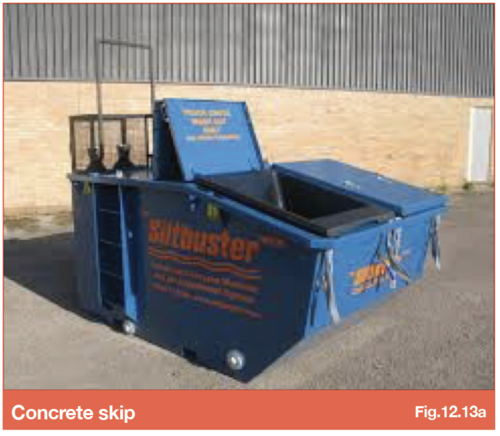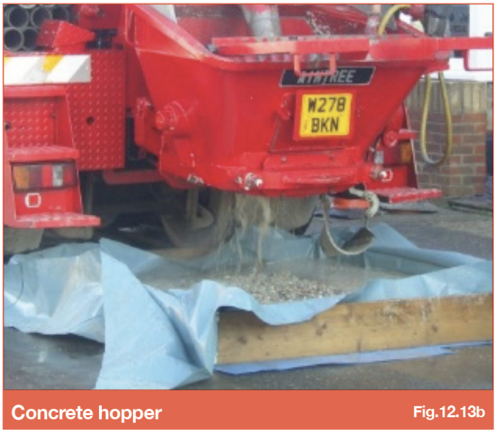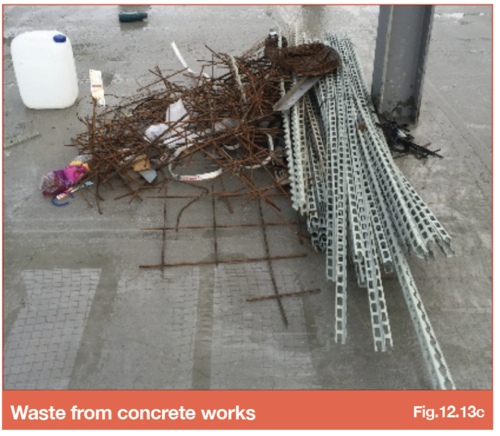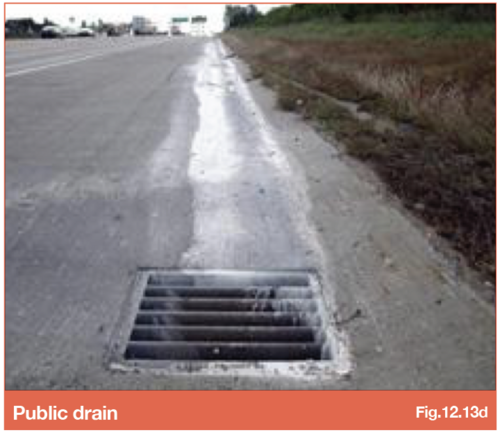12.13 Surplus concrete waste
Disposal of Waste
Consideration must be given to ensure the safe disposal of waste associated with concrete topping works. This includes both off-cuts of mesh reinforcement and an environmentally safe way for the disposal of residual concrete in both the pump and concrete supply vehicles.
Skips
A solution for the safe disposal of waste associated with concrete topping works will be discussed with the client pre-contract and this can be in the form of a designated area on site or a polythene lined skip. In some cases, a client may have a skip manufactured specifically for the purpose of concrete wash-out. These have the ability to separate the aggregate from the water and return the liquid to a satisfactory pH, through the addition of environmentally friendly chemicals, to then be discharged back into the watercourse.

Concrete hopper wash out
Consideration must be given to any concrete contained within the hopper of the pump. The concrete pump has the ability to pump some of the concrete through its pipeline into a designated area but the remaining amount has to be discharged through the bottom of the hopper. This must therefore be carried out in a predetermined area on-site or a box, made usually from timber and lined with polythene with exposed rebar. This will be placed under the hopper and removed once the concrete has had time to harden.

Associated product waste
Removal of waste associated with the reinforcement phase i.e. mesh should be removed via skips/tonne bags that are in close proximity to the working area. Walking off-cuts over long distances should be avoided and if a skip/tonne bag is not available, waste should be left in a neat pile, corralled from other trades on-site to be removed as and when a means of removal can be sourced. It is preferred that waste can be cut into smaller, more manageable pieces in order to aid in its safe removal. Walking reinforcement waste down stairs should be avoided as this increases risks regarding manual handling.

DO NOT use public drains
Concrete is classed as a contaminate (details of which can be found in the COSHH file) and if it is to be discharged in a designated area on-site, this should be in isolation with no waterways, drains, water inlets in close proximity as this could have a detrimental effect on the environment.

Back to Contents Page
Need Further Guidance?
Contact us on +44 (0)1202 718 898 or email our Technical Team

